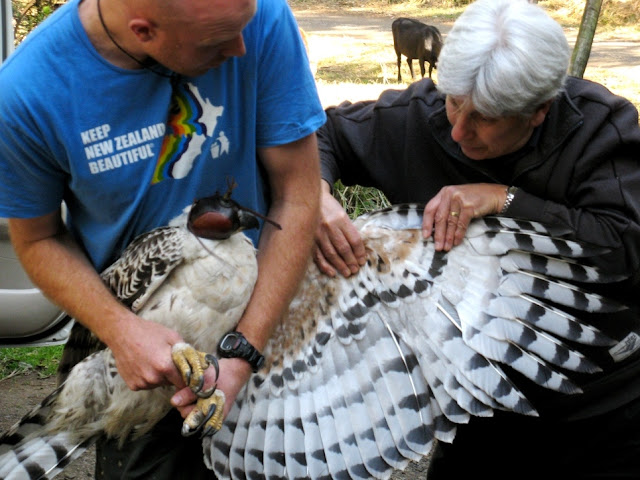On the last day of July, I am at the starting blocks and now quite prepared for the 2012 breeding cycle.
The first of the known nesting pairs for 2012 has just
hatched two eaglets, while another six pairs have gone down on eggs in the last
couple of weeks. From Ballito on the
north coast, to Umdoni on the south coast, and as far inland as Howick, there are
about 30 nest sites (some of which still need to be confirmed as still or
recently occupied). Out and about I have
also seen several displaying pairs, and heard of other from reliable residents,
that don’t coincide with current known territories. Finding these nest sites will require a serious
investment of searching effort.
 |
| as she rolls out of another loop - the female catches the sunlight on her underwing |
 |
| look closely - it is amazing how flat and concealed such a large eagle can be |
Lately with a little bit of self-justified ‘extra time’ on
my hands (more accurately - a misdirected procrastination from drafting my
introductory chapter) I have been out and about trapping some of the fledged
juveniles from the 2011 cohort. And had
success with two birds, one in industrial Pietermaritzburg, and one in a rural
residential area in Hilton. While the
sexes of most raptors are dimorphic, some Crowned Eagles appear quite marginal
in their size – and it remains to be seen whether there is overlap between the
smallest females and the largest males.
DNA sexing tests will provide unequivocal results – though in the
meantime I have laid my bets based on some biometric information, and the behavior
of the individuals.
The first two seemed quite catatonic in the hands, while my
guess is the most recently caught was a male and a lot more coherent while
being ringed - he tried to bite even while hooded. Indeed he succeeded at one point, and managed
to give me a very painful nip’l.
 |
| the third juvenile ringed © Niel Rasmussen |
I find this particular observation quite interesting. I am estimating from the moult pattern that
this bird is about 20-22 months - a male that has found its ‘grown-ups’
voice. This call is often heard when
adults are sky-dancing over their territories either as courtship or as a territorial
display. So what is this guy up to?




















